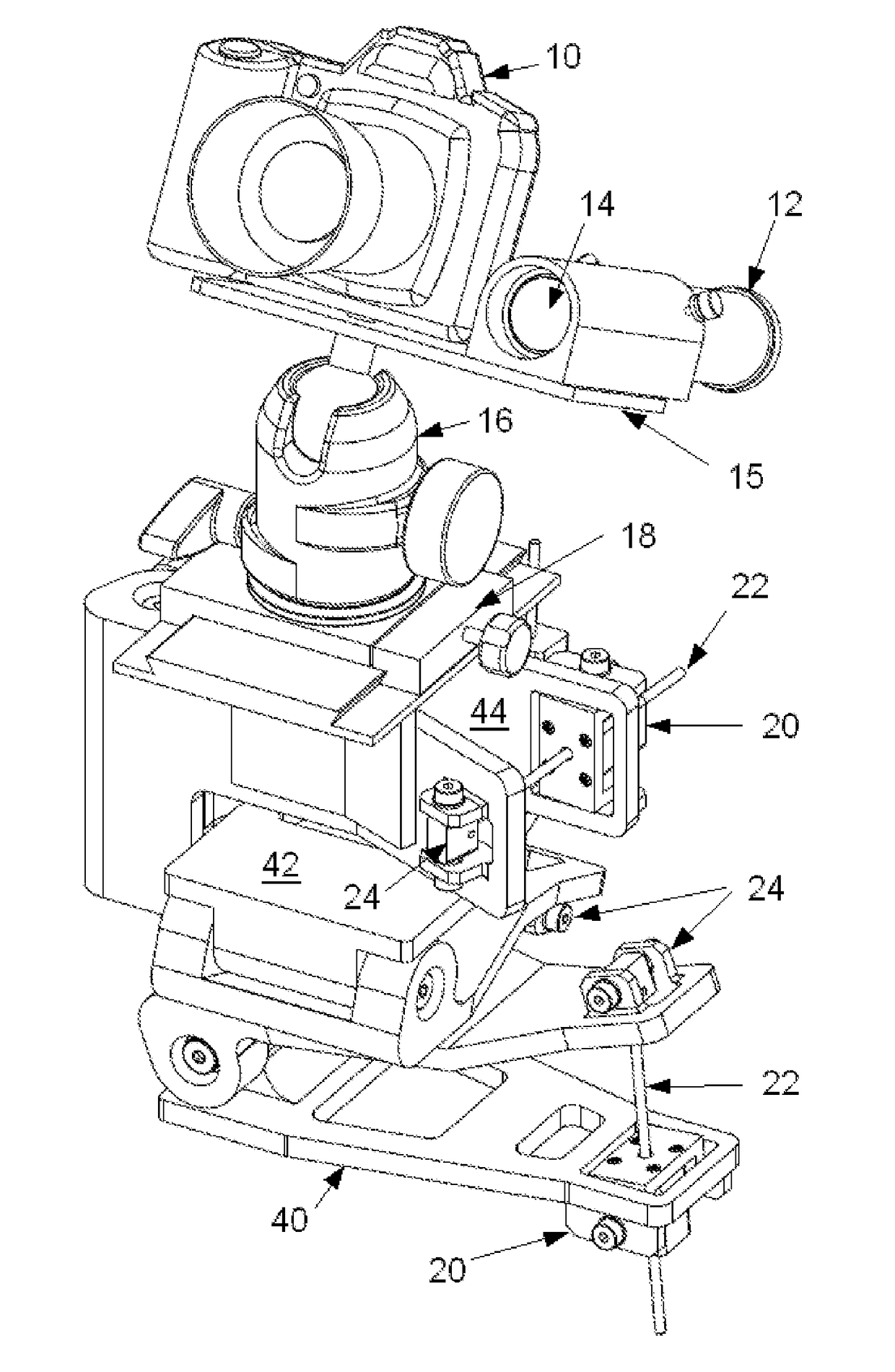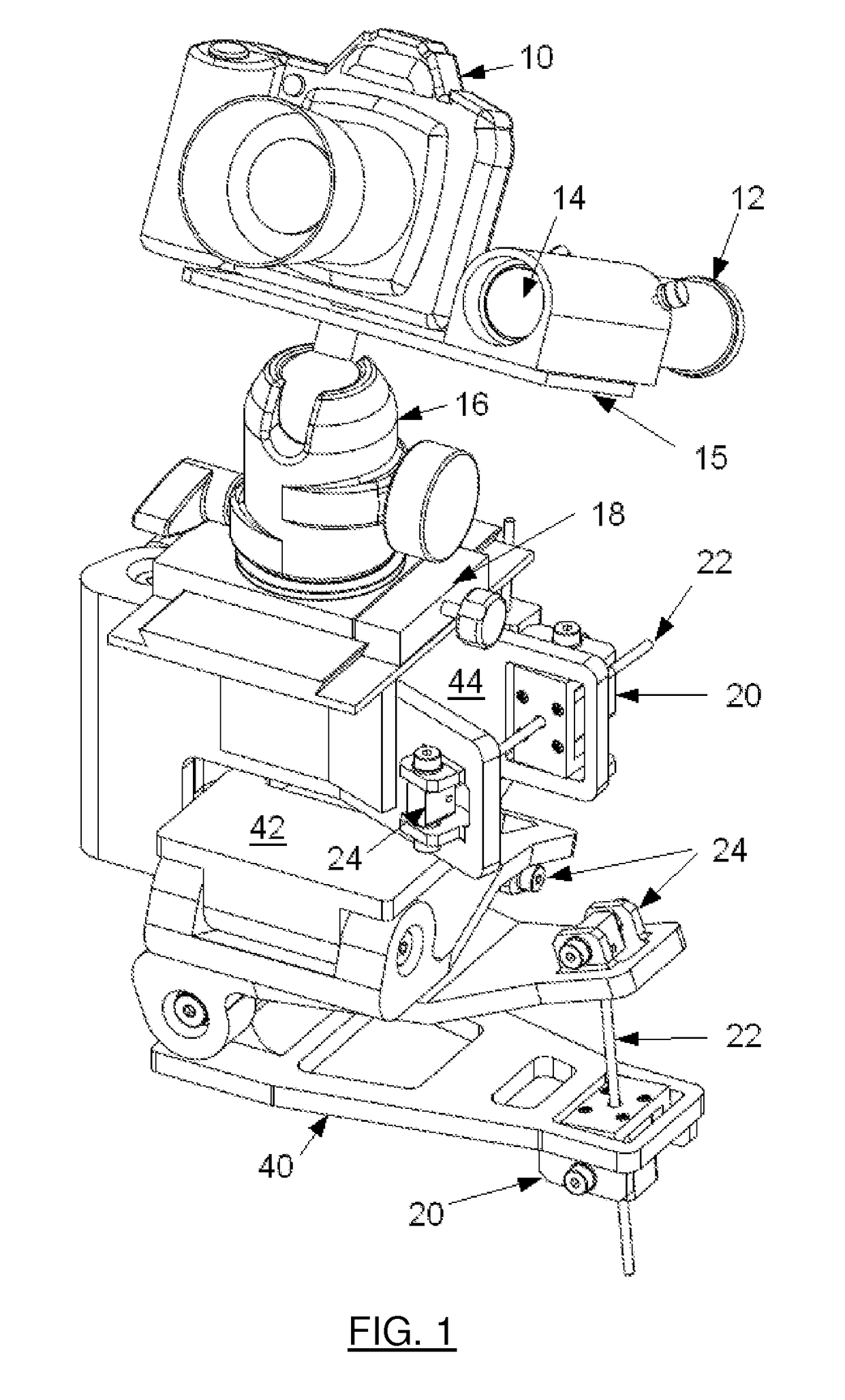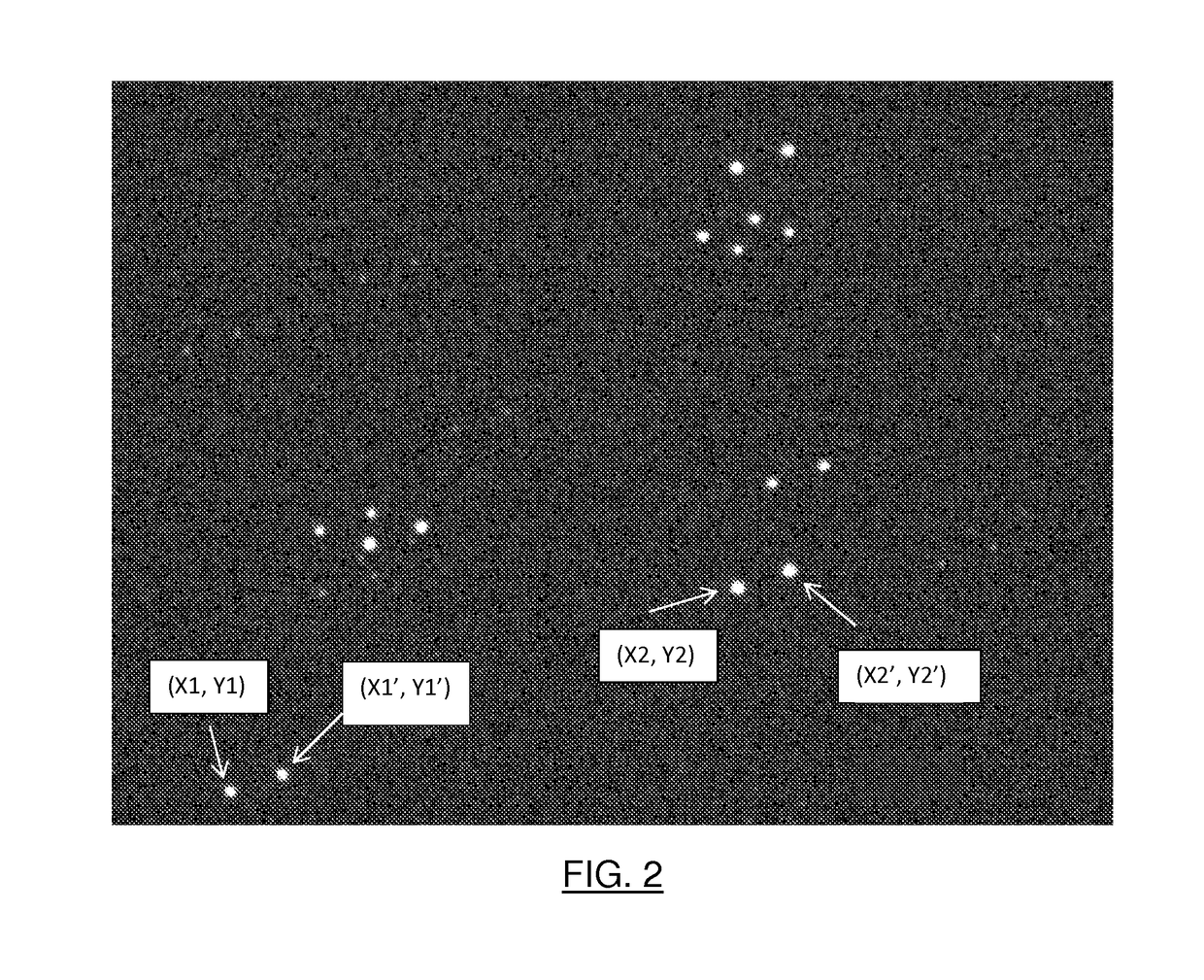Tracking device for portable astrophotography of the night sky
a tracking device and astrophotography technology, applied in the field of astrophotography, can solve the problems of requiring heavy counterweights, requiring a large amount of weight, and limiting exposure to around 10 seconds
- Summary
- Abstract
- Description
- Claims
- Application Information
AI Technical Summary
Benefits of technology
Problems solved by technology
Method used
Image
Examples
Embodiment Construction
[0019]The present tracking device is illustrated in schematic form in FIG. 1. The device uses at least one tilt stage which can be tilted about three axes. In the exemplary embodiment shown in FIG. 1, three orthogonal tilt stages (40, 42, and 44) are stacked to produce a system whereby a dovetail plate 18, and therefore all the components above it, such as a camera 10, a guider / lens 12 / 14 (referred to herein as a ‘guider camera’), and a camera mounting plate 15 can be tilted in three axes. Here the axes are azimuth (44), elevation (42), and rotation about a horizontal axis (40), but in practice the axes do not need to be lined up with local vertical. The tilt stage for each axis is implemented here using a well-known ‘tangent arm’ design, where linear stepper motors 20 (two of which are visible in FIG. 1) drive each axis separately via respective lead screws 22 to achieve fine step, and therefore angle, resolution. The camera is mounted to the top stage using an adjustable mount, su...
PUM
 Login to View More
Login to View More Abstract
Description
Claims
Application Information
 Login to View More
Login to View More - R&D
- Intellectual Property
- Life Sciences
- Materials
- Tech Scout
- Unparalleled Data Quality
- Higher Quality Content
- 60% Fewer Hallucinations
Browse by: Latest US Patents, China's latest patents, Technical Efficacy Thesaurus, Application Domain, Technology Topic, Popular Technical Reports.
© 2025 PatSnap. All rights reserved.Legal|Privacy policy|Modern Slavery Act Transparency Statement|Sitemap|About US| Contact US: help@patsnap.com



